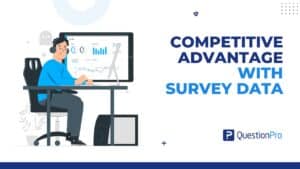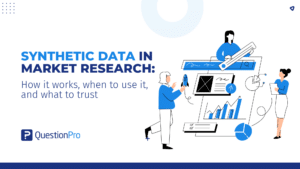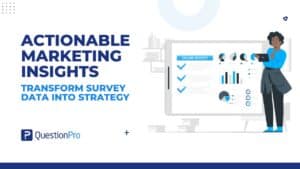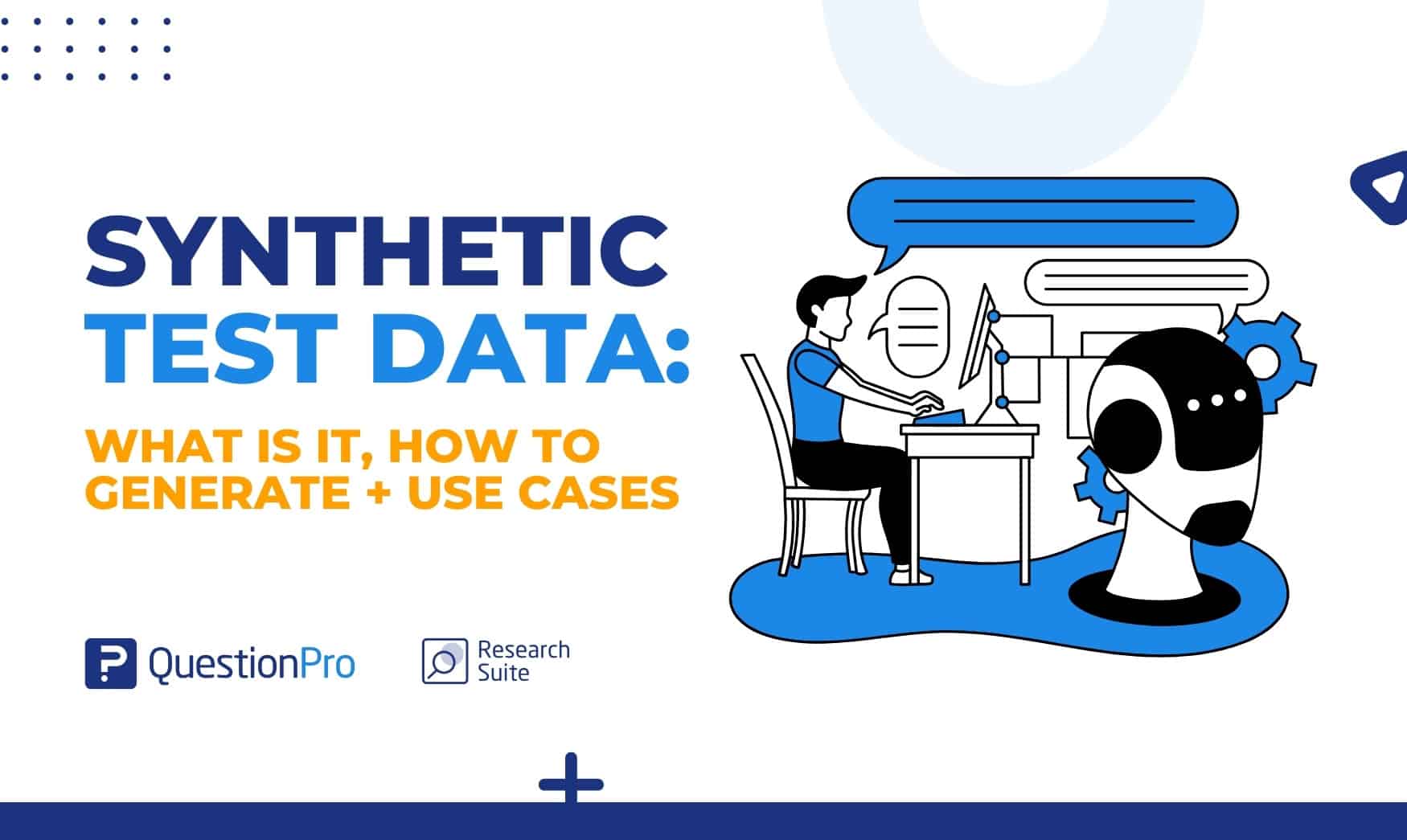
Have you ever wondered how software engineers, data analysts, and entrepreneurs utilize data’s value without compromising privacy? In this case, synthetic test data emerges as a shining knight. It enables you to experiment, test, and analyze data without disclosing the true identities of your subjects.
Synthetic data goes by various names, such as fake data, dummy data, mock data, or example data. It ensures that it can properly replicate real-world data settings, making it a useful tool in different software testing and analytical applications.
In this blog, we’ll learn about synthetic test data and its benefits in today’s data-driven world. We’ll also learn how to generate synthetic test data and know the real-world use cases where data-driven creativity shines.
What is Synthetic Test Data?
Synthetic test data is artificial data created to replicate the features of real data. It is not based on actual data or current knowledge but artificially generated using algorithms. It is designed to look, feel, and act like the real thing.
It’s useful in a variety of industries, including software development, data analysis, quality assurance, and privacy compliance. It essentially allows professionals to recreate real-world circumstances while maintaining privacy and confidentiality.
Synthetic test data is generated for two primary reasons. Firstly, it shields sensitive information that should not be exposed in testing or analysis. Secondly, it is designed to meet particular requirements or reproduce situations that may not be easily accessible in production data.
Benefits of Synthetic Test Data
One of the most important advantages of using synthetic test data is the protection of sensitive information. This data is incredibly valuable, and that means it also needs to be kept secure during testing and development.
Here’s how synthetic test data benefits research and survey environments like QuestionPro:
- Protects Data Privacy and Compliance: When building or testing surveys, synthetic data can safely replace real customer or respondent information. This ensures that no personally identifiable information (PII) is exposed, helping your research stay compliant with privacy regulations like GDPR, HIPAA, and CCPA.
- Supports Large-Scale Testing: Need to simulate hundreds of thousands of responses? Synthetic test data can generate realistic, scalable datasets to stress-test your survey logic, reporting dashboards, or data pipelines without needing access to real-world responses.
- Improves Test Coverage with Diverse Scenarios: Real-world data is often limited in scope. Synthetic datasets let you simulate edge cases, rare conditions, or a wide range of respondent behaviors. This helps uncover bugs or logic flaws before your survey ever goes live.
- Ensures Data Quality: Synthetic data can be designed to follow precise rules and formats. You can control for missing fields, outliers, or formatting inconsistencies to ensure smooth testing, cleaner integrations, and more reliable survey performance.
- Useful for Training and Demonstrations: From onboarding new users to training teams on data analysis tools, synthetic data gives you the freedom to teach, demo, or practice without ever exposing sensitive survey results or customer insights.
Synthetic test data supports safe, scalable, and smart survey development. Whether you’re building a new customer feedback form or designing a complex research workflow, synthetic data lets you test with confidence without compromising privacy.
Synthetic Test Data Types
As you start to create synthetic data for surveys and research, you’ll see how versatile it is. Synthetic test data allows researchers and developers to simulate many scenarios, test logic, performance, and error handling without exposing any real participant data.
01. Valid Test Data
Valid test data is designed to follow the correct formats, values, and logic expected by a survey or research system. It helps confirm that everything works as it should under normal conditions. This type of data is used to:
- Check question formatting,
- Verify input validation,
- Ensure correct response handling, and
- Confirm smooth system behavior during typical use.
It’s essential for making sure surveys run reliably before going live.
For example, valid test data might be a correctly formatted email address for survey invitation fields, a date of birth entered in the correct format and within a realistic range, or numeric responses within the expected scale, like a 7 on a 1-10 scale. Using valid inputs ensures systems work correctly when given accurate expected data.
02. Invalid or Erroneous Test Data
Invalid or erroneous data is intentionally wrong and used to test how well the system detects and responds to input errors. This type of testing helps improve data validation, system security, and user guidance.
03. Boundary Test Data
Boundary test data is used to test how the system behaves at the edges of its defined input limits. These tests are essential to find issues that only appear when data approaches or slightly exceeds the acceptable thresholds.
For example, you might test an open-ended text question with a response that’s one character shorter than the minimum or one character longer than the maximum allowed.
04. Huge Test Data
Huge test data refers to large simulated datasets designed to evaluate how well survey or research platforms perform under pressure. It’s especially useful when testing systems that need to:
- Process large volumes of responses,
- Maintain speed and reliability, and
- Scale efficiently as usage grows.
This kind of testing helps ensure platforms remain stable and responsive, even at high capacity.
Using synthetic test data in surveys and research is a safe, flexible, and effective way to ensure systems work correctly. It’s used for normal operations, edge cases, and extreme conditions without ever needing to use real participant data.
How do You Generate Synthetic Test Data?
Generating synthetic test data is a key part of creating safe, controlled environments for testing surveys, research workflows, and data processing systems.
It allows researchers and developers to simulate responses, model behavior, and test analytics all without exposing real participant data.
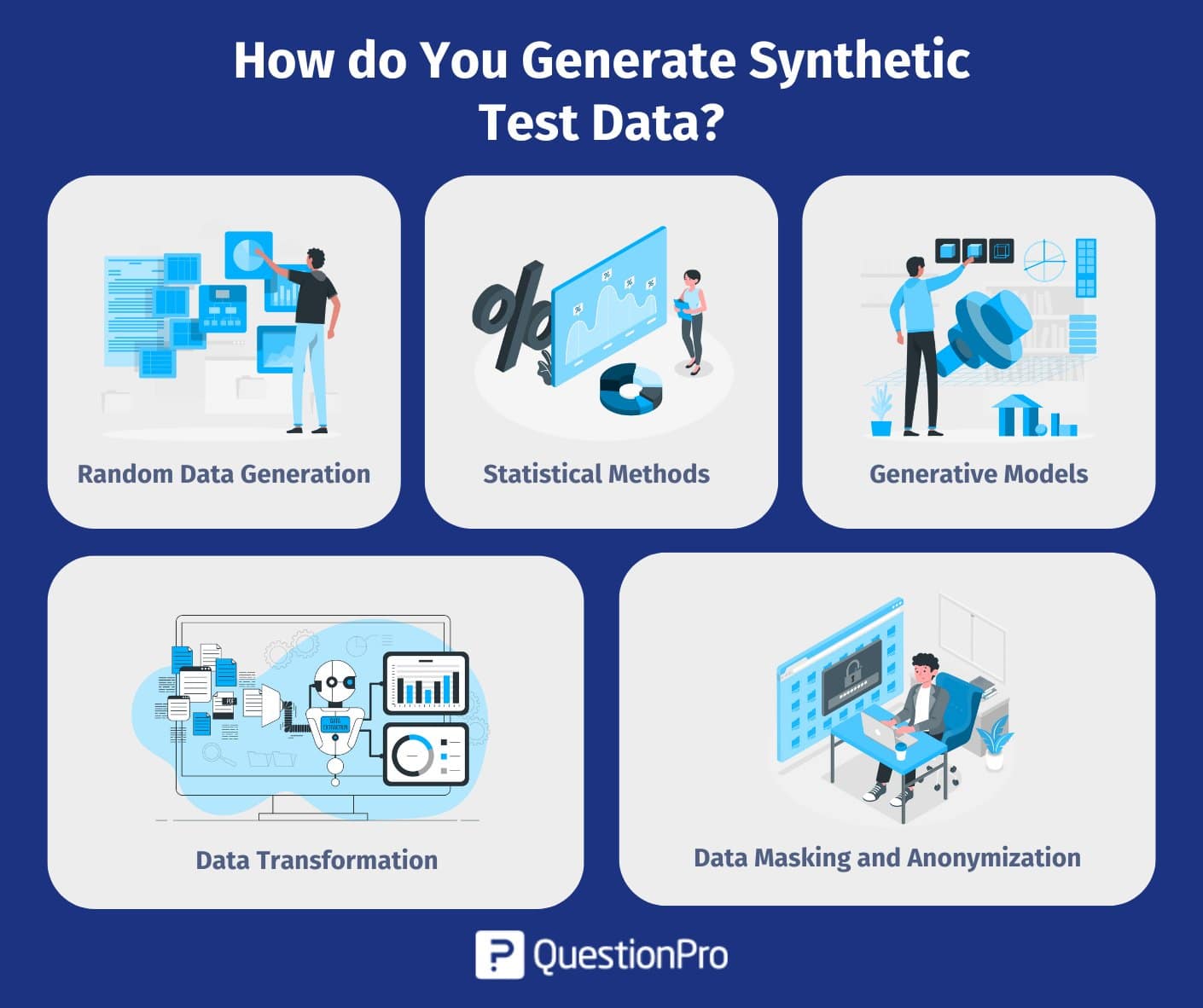
Random Data Generation
Random data consists of fake survey responses or research inputs that don’t follow any specific logic or patterns. It’s often used for simple testing tasks and may include:
- randomly generated names.
- arbitrary dates or timestamps.
- mixed or inconsistent rating values.
- unpredictable answer selections.
The approach is useful for testing basic functionality without needing realistic data behavior. This is simple and good for basic testing like survey logic, skip patterns, or export functionality.
2. Statistical Methods
Statistical methods generate synthetic data that mirrors the distribution and characteristics of real survey datasets. For example, if 70% of actual respondents rate 8-10, the synthetic version will reflect that.
This is good for simulating real trends, benchmarking, or stress testing analytics tools while keeping the data’s underlying relationships and distributions.
3. Generative Models
Generative models like GANs (Generative Adversarial Networks) and VAEs (Variational Autoencoders) create highly realistic synthetic data. In surveys and research, these models can replicate complex response patterns, open-ended feedback, or multivariable relationships.
They’re great for testing predictive analytics, machine learning applications, or natural language processing systems within survey data environments.
4. Data Transformation
Data transformation involves modifying real survey responses to create synthetic versions that maintain the original statistical patterns. This method allows for subtle adjustments such as:
- Slightly changing numerical ratings.
- Swapping answer choices within questions.
- Adjusting formats without altering data integrity.
It’s a practical way to generate synthetic data while preserving realism for testing and analysis.
5. Data Masking and Anonymization
Data masking and anonymization replace personal information like names, email addresses, or ZIP codes with realistic yet fictional alternatives. These methods keep the original format and logic of the data while keeping it private.
For example, open-text responses can be replaced with synthetic phrases that follow the same patterns, which is essential for ethical testing and compliance.
By using these methods, survey and research professionals can create safe and flexible testing environments to enable robust development, analytics validation, and system testing without using real participant data.
If you want to learn more, read this blog: 11 Best Synthetic Data Generation Tools in 2024
Use Cases of Synthetic Test Data
Synthetic test data plays a valuable role in surveys and research by enabling safe, controlled testing environments without relying on real respondent information. From designing complex survey logic to training research teams and validating data systems, synthetic data helps ensure accuracy, scalability, and privacy across various use cases.
Survey Design and Testing
Synthetic test data is highly valuable in surveys and research because it enables safe, controlled testing environments without relying on real respondent data. It supports a wide range of tasks, including:
- Designing and testing complex survey logic,
- Training research teams in realistic scenarios,
- Validating reporting and analytics systems, and
- Ensuring privacy while simulating real-world data.
This makes synthetic data a powerful tool for accuracy, scalability, and data protection in research workflows.
For example, if a survey has different question sets for different age groups or industries, synthetic data can confirm each respondent type gets the right experience.
Machine Learning and Predictive Research
When surveys feed into predictive models, for example, churn prediction or sentiment analysis, synthetic data can be used to train and test algorithms. This is especially useful when the real dataset is too small, incomplete, or restricted due to privacy concerns.
Using synthetic data lets researchers test model accuracy, test edge cases, and fine-tune parameters without putting real respondent data at risk.
Market Simulation and Concept Testing
Synthetic datasets can simulate market segments, customer preferences, or buyer behaviors when testing new products, pricing models, or marketing messages. These artificial response sets can be structured to reflect real-world trends or hypothetical demographics and let teams test different “what-if” scenarios in a controlled way.
Dashboard and Data Visualization Testing
Before collecting real responses, synthetic test data can be used to populate dashboards and data visualization tools. It helps test functionality and catch issues early, allowing teams to:
- Check performance and loading speed,
- Identify display problems like misaligned charts, and
- Validate metric calculations and data aggregation.
This ensures the reporting experience is smooth and accurate before going live.
It also allows stakeholders to see what the final dashboard will look like, even if no real responses have been collected yet.
Privacy-Safe Test Environments
When testing new survey features, data pipelines, or integrations with third-party tools (like CRM systems or reporting platforms), synthetic data ensures privacy compliance. It lets teams simulate the entire data flow without exposing personal or confidential survey responses.
Whether you’re testing GDPR or HIPAA workflows or sensitive feedback loops, synthetic test data keeps data protection standards across the whole research process.
In the world of surveys and research, synthetic test data is more than a placeholder; it’s a way to test, learn, and optimise without putting respondent data at risk.
Conclusion
Synthetic test data arises as a powerful ally. It allows you to realize the full potential of your software applications, analytics activities, and research projects while protecting sensitive data privacy and security.
Whether you’re a software engineer, data analyst, researcher, educator, or industry expert, synthetic test data allows you to run tests, make informed decisions, and improve your skills without compromising the confidentiality of real-world data.
QuestionPro is an online survey and research platform that enables businesses and researchers to gain significant insights from surveys and assessments. While QuestionPro is generally used for survey development, data gathering, and analysis, it is also important in the context of synthetic test data.
Before delivering surveys to a live audience, researchers frequently evaluate the survey’s performance, question clarity, and response alternatives. During these testing phases, researchers can use synthetic test data to replicate responses, allowing them to detect potential faults and enhance their surveys without exposing real respondents to incomplete or incorrect surveys.
Organizations and researchers can improve the efficacy and reliability of their data-gathering and analysis processes by introducing synthetic test data into their research and survey workflows.
There is no better time than now to try QuestionPro’s cutting-edge survey and research platform’s power and versatility. A free trial lets you try the platform’s many capabilities, from designing surveys and collecting data to using powerful analytics tools to obtain insights. Start Now!
Frequently Asked Questions (FAQs)
Answer: Since synthetic test data doesn’t come from real individuals, it removes the risk of exposing sensitive information like names, emails, or demographic details, making it ideal for GDPR, HIPAA, and other privacy regulations.
Answer: Yes. Researchers use synthetic responses to simulate different user paths, test skip logic, and ensure survey flows work correctly across various conditions without relying on live data.
Answer: Common methods include random data generation, statistical modeling, generative AI (such as GANs or VAEs), data transformation, and anonymization to replicate the structure and logic of actual responses.
Answer: Types include valid data (that matches expected input), invalid data (for error testing), huge datasets (for performance testing), and boundary data (for testing input limits like character count or file size).
Answer: It allows for more flexible, secure, and scalable testing environments. Synthetic data helps uncover issues early, supports compliance, and speeds up development without the ethical or legal risks of using real data.




